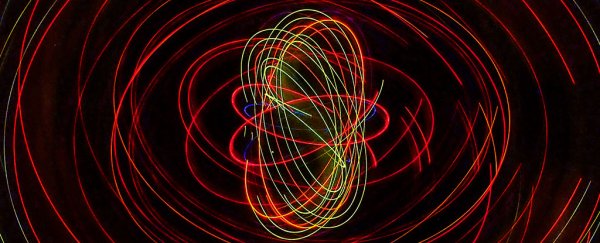While physicists have managed to wrap their minds around chaos theory in the macroscopic world, chaos also has its way at the quantum scale. And in many ways quantum chaos is even more perplexing than its large-scale counterpart.
Which is why it's such a big deal that researchers have now presented a single equation that can predict how quantum chaos behaves.
This equation effectively explains the patterns within quantum chaos at the atomic level, and it could contribute to our understanding of everything from brain surgery to string theory.
Even the researchers who came up with it were surprised they could predict the behaviour of quantum chaos so neatly.
"Yes, we now have an exact equation," says one of the researchers, Vladimir Osipov, from Lund University in Sweden.
"Personally, I am actually surprised that it was possible at all."
To develop the equation, the researchers analysed statistical properties of different energy levels in a quantum chaos state. What does that mean?
To understand that you need to take a step back and look at regular chaos theory, which is probably best known from the example of the butterfly effect - very small changes of input to a system can have a very big impact, and the world and nature can be incredibly unpredictable as a result.
Quantum chaos follows the same principle, but it aims to explain the strangeness that occurs within an atom, where protons and neutrons behave like waves rather than particles.
This can also apply to the behaviour of waves on a larger scale, such as irregular movements of both electrons and nuclei, as well as things like sound waves in a furnished room, or rays of light in optical instruments. And it introduces another level of complexity on top of regular chaos theory.
"In chaotic quantum systems, the energy levels repel each other, and they affect each other even if they are far apart," says Osipov.
Researchers have long tried to make predictions about how quantum chaos would behave, but it's challenging as chaotic systems are so sensitive to the initial numbers entered in calculations. Even computers struggle to find reliable patterns.
But the researchers used the fact that atoms in excited states give off energy levels that can be measured, to come up with a unifying rule that could predict behaviour at the atomic level.
They say that the new equation - which is a little too mind-bending to go into in too much detail, but you can read in full in Physical Review Letters - offers a universal, parameter-free way to predict how a chaotic system will behave on the quantum level.
Right now the work is purely theoretical, but the equation will have practical applications. It can be applied wherever chaotic states need to be measured and understood, such as in financial markets, the human brain, and even the concept of string theory.
We may not have cracked the quantum chaos code fully yet, but the equation should help inform future research into some highly complex questions: the researchers say their equation will now help calculate specific quantum chaos states more easily.
"Just the atom by itself is never chaotic, but if you put a field on it, for instance a magnetic field or an electric field, then the classic motion becomes chaotic," Daniel Kleppner from MIT, who wasn't involved in the new research, explained back in 2014.
"The question is what is the quantum behaviour of this system? It's a provocative question."
Now we finally have an equation to help us answer that question.
The research has been published in Physical Review Letters.
